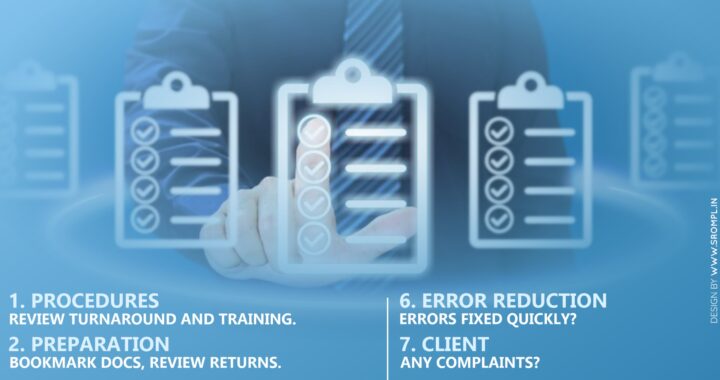As tax season concludes, firms have a valuable opportunity to reflect before diving into new projects or well-earned downtime. A post-season review isn’t just a best practice—it’s a strategic exercise to improve performance, enhance client service, and strengthen internal operations.
Here’s a structured checklist to guide your retrospective:
1. Performance Recap: Did We Deliver?
-
Turnaround Time: Were deadlines met without compromising quality?
-
Client Satisfaction: Did clients feel supported and well-informed?
-
Team Growth: Who stood out? Where are additional training or resources needed?
2. Preparation Process: Laying the Groundwork
-
Technology Use: Were scanning tools and workflow systems effective?
-
Preparer Assignments: Were returns matched to skill level?
-
Training Access: Did staff have support for complex questions?
3. Review Phase: Beyond Error-Checking
-
Efficiency: Was review time proportionate to the complexity of returns?
-
Feedback Loop: How quickly were issues resolved and sent back?
4. Administrative Support: Operational Backbone
-
System Entry & Filing: Was admin turnaround timely and accurate?
-
Shift Coverage: Were staggered shifts used to manage workload peaks?
-
Orientation: Was the admin team trained to handle seasonal demands?
5. Staffing & Scheduling: Right Roles, Right Returns
-
Staff Allocation: Was continuity maintained for returning clients?
-
Workload Balance: Were assignments fairly distributed?
-
Error Trends: Were issues tied to fatigue, onboarding, or gaps in training?
6. Reducing Errors: Process, Not Just People
-
Checklist Compliance: Were internal quality checks consistently followed?
-
Error Response: Were recurring issues addressed at the source?
-
Training Gaps: Were mistakes due to oversight or unclear procedures?
7. Client Communication: Building Trust
-
Proactive Outreach: Were major updates delivered personally?
-
Timely Follow-Up: How quickly were document requests addressed?
-
Portal Experience: Was the client interface intuitive and reliable?
8. Partner Involvement: Leadership in Motion
-
Visibility: Were partners accessible and engaged?
-
Support Role: Did they help resolve bottlenecks or contribute to them?
-
Strategic Input: Was partner involvement aligned with firm priorities?
9. Seasonality Management: Planning for Pressure
-
Overtime Strategy: Was workload managed without burnout?
-
Intern Performance: Who stands out for potential long-term roles?
-
Deadline Flow: Were staggered deadlines used to reduce bottlenecks?
10. Marketing & Client Retention: Extend the Relationship
-
Post-Season Follow-Up: Were additional services promoted (e.g., financial planning, entity restructuring)?
-
Client Retention: Did any clients drop off, and why?
-
Value Communication: Are clients aware of the firm’s full offerings?
Final Thoughts: Use the Past to Power the Future
Tax season provides a wealth of insight. A structured review helps transform that insight into smarter systems, stronger teams, and better client outcomes. The effort you put into reflection now sets the tone for next year’s success.
